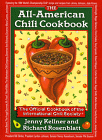
Beaming Foods
Natick Hopes Irradiation Gains Consumer
Acceptance
By Jane Benson
NATICK, Mass. (Army News Service, May 12, 2000) - Natick researchers are constantly looking at ways to increase the variety of combat rations, make them more healthful and improve their taste.
That's reason enough why Vicki Loveridge has no beef with the Feb. 22 decision by the U.S. Department of Agriculture to extend its approved list of irradiated foods to include raw red meats.
"This food process has been studied more than any other food process in history," said Loveridge, a senior food technologist at the Department of Defense Combat Feeding Program at the U.S. Army Soldier Systems Center (Natick).
During irradiation, foods are placed in a machine that exposes them to electron beams or cobalt gamma rays. The process kills bacteria by briefly altering the electric charge of the molecules in the food and microorganisms. Foods processed by irradiation are safer to eat and have a longer shelf life. They also are more nutritious and better tasting than foods processed with other methods used to rid them of insects or bacteria, she said.
Irradiation is particularly effective in killing bacteria like salmonella or E. coli that cause food-borne illness. Loveridge said that according to the Center for Disease Control, between 5,000-9,000 Americans die and 33 million Americans become ill each year from food-borne illness.
"It provides a safe, premium product," Loveridge said. "Just think of the impact on public health and well being, not to mention short and long-term healthcare and worker productivity."
She is not alone in her opinion. In fact, the American Medical Association, World Health Organization, Mayo Clinic, U.S. Food and Drug Administration, and U.S. Public Health Service all agree with her. The process seems especially suited to the problems associated with raw beef.
"Eighty-nine percent of U.S. ground beef contains E.coli," said Loveridge. "You can't taste it. You can't smell it."
Loveridge explained that during irradiation the charges of the electrons in bacteria are altered, but only briefly. A product can only become radioactive -- some people's fear -- if the nucleus were affected.
"There just isn't enough energy available in the process to make food radioactive," Loveridge said.
However, meat packagers and producers remain hesitant.
"There are very few food irradiation facilities in existence, so getting the meat to a place where it can be irradiated poses a challenge," said Loveridge.
The industry also is concerned that public misconceptions may cause consumers to reject the product.
Many Americans are curious about the process, but are not sure what it is or why it might be used.
"Ninety years ago people had similar fears about pasteurization," Loveridge said. "Irradiation does not affect mineral, fat, carbohydrate or protein content. There is reduction of some vitamins, but that's true of freezing, heat pasteurization and canning, too."
Loveridge continued that many people are not aware that canning actually alters food much more than irradiation. Canning causes vast chemical and physical changes in food.
Consumers also may not be aware that the irradiation process is already used on a myriad of consumer and medical products, in addition to several foods. These products include contact lens solution, eye shadow, liquid detergents, earrings, potpourri, bandages, blood serum, hypodermic needles and scalpel blades.
International humanitarian groups are interested in food irradiation because it could help address distribution problems. The process may reduce the amount of food lost to insects, mold and other types of spoilage, and increase food reserve supplies.
Irradiated foods also would be a healthful addition to combat rations called Meals, Ready to Eat (MREs).
Loveridge said that the inclusion of shelf-stable irradiated foods in warfighter rations would increase the variety of familiar foods, and improve texture and taste.
Irradiated products could benefit military logistics because they include less water than canned foods, reducing their weight.
Natick researchers are interested in educating the military population on currently-approved irradiated foods so that someday the irradiated shelf-stable foods will be FDA-approved for general use and offered in products such as the MRE.
The process has already been approved for numerous types of food, including poultry, pork, fruits, vegetables and spices. She said irradiation is actually safer than chemical alternatives, which have been traditionally used to treat produce and spices. Many of these chemical treatments are now being outlawed because they cause ozone depletion.
Natick already has a long history of producing irradiated foods for the space program. Natick pioneered irradiation in the 1960s as a method of food preservation and had its own irradiation equipment until the early 1980s. Today, foods are produced here and then irradiated at a facility run by Food Technology Service, Inc., with whom Natick has a Cooperative Research and Development Agreement.
Natick is part of the U.S. Army Soldier and Biological Chemical Command (SBCCOM). For more information about SBCCOM or the Soldier Systems Center (Natick), please visit our web site at http://www.sbccom.army.mil.
Jane Benson is a staff writer for the Soldier Systems Center, Natick, Mass.
An Army news story, dated May 12, 2000.
May 2000
| Bulletin Board | Keyword Search |
| Bookstore | Links |
| About Us | Recent Additions |
![]()

